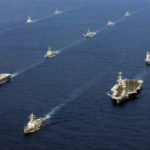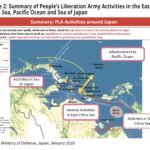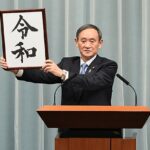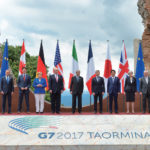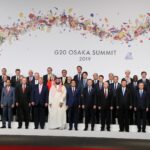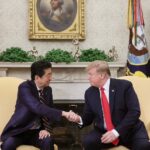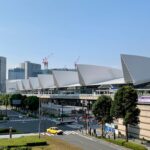On December 18, 2018, Japan’s Cabinet approved the next National Defense Program Guidelines (NDPG) and Medium Term Defense Program (MTDP). Attracting attention both nationally and around the world has been the modification of the Japan Maritime Self-Defense Forces’ two Izumo-class helicopter destroyers to accommodate STOVL aircraft. Mizuno Tetsu comments.
Japan is an archipelago consisting of thousands of isolated islands and groups of islands, more than 450 of which are inhabited. Needless to say, air power is the key to defending, observing and monitoring these island borders.
The size of the five-year budget for defense equipment indicated in the new MTDP announced on December 18, 2018 is approximately 27 trillion yen, of which about two trillion yen will be cut by reducing procurement costs for equipment and parts. The budget is based on additional and strengthened outer space, cyberspace and electromagnetic waves capabilities in addition to existing land, sea and air defense infrastructure.
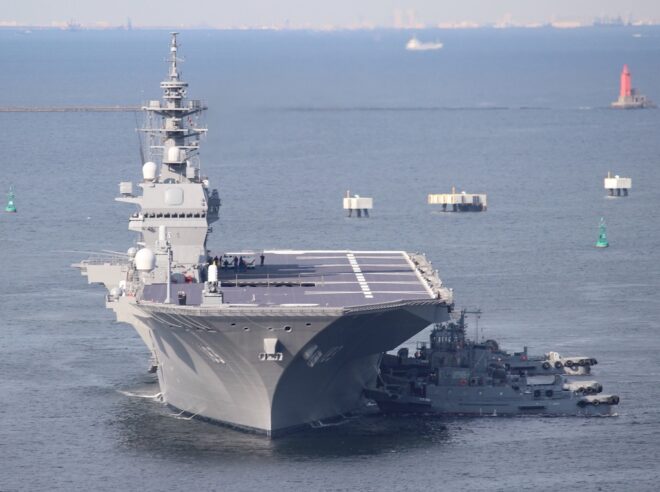
JS Izumo (DDH 183) (pictured) and JS Kaga are the two largest ships in the Japan Maritime Self-Defense Force fleet. JS Izumo is based in Yokosuka, Kanagawa Prefecture, and JS Kaga is based in Kure, Hiroshima Prefecture, The ships are 248 m long, 38 m across the beam, and have a top speed of 30 kn (56 km/h). CC BY-SA 4.0
One feature that has attracted attention is the modification of the Self-Defense Forces’ (SDF) largest vessels, the Izumo-class helicopter destroyers Izumo and Kaga, for use as multi-purpose destroyers carrying Short TakeOff/Vertical Landing (STOVL) F-35B aircraft. Within the Japan-US security framework, the Izumo-class destroyers support US aircraft carriers and so play a vital role in anti-submarine defense.
Regarding fighter aircraft: the current F-15s will gradually be switched to F-35A and F-35B, and since they will be deployed to SDF land bases, the NDGP specifies that “when necessary, operation of STOVL aircraft from existing vessels will be made possible.”
Defense Minister Iwaya Takeshi, at the press conference after the Cabinet decision in December, explained the background of the NDPG and MTDP as follows:
The activities of bombers and aircraft carriers in the maritime and air space around Japan including the Pacific side have rapidly been growing in volume and increasing in frequency unlike in the past due to the modernization of the airborne forces of neighboring countries. We believe that it is necessary to strengthen our air defense system not only in the southwest and northern regions but also on the Pacific side. However, there are no bases, airports where aircraft can land and take off other than the Island of Iwo-to, as you are aware. In that sense, in the case where STOVL aircraft is necessary (sic) for Izumo class destroyers, if they can be carried there, we believe that the air defense system on the Pacific side can also be strengthened.
There has been discussion over whether this modification of the Izumo-class destroyers means Japan will now possess an attack aircraft carrier; and whether that would violate a constitution that stipulates an exclusively defense-oriented policy. Including China, neighbor nations have even expressed concerns that Japan’s new defense program represents accelerating militarization. Regarding this modification of the Izumo-class destroyers, following successive debates by the ruling Liberal Democratic Party and Komeito coalition, agreement was reached based on clarification that the Izumo would operate within the exclusively defense-oriented policy. Then, during a February 2018 regular session of the House of Representatives, Prime Minister Abe stated that there was not the slightest change to the understanding that the possession of attack weapons, including attack aircraft carriers, is not permitted. Before the Cabinet decision too, he stated that “its multi-purpose use will be maintained.”
Defense Minister Iwaya also emphasized that the Izumo-class destroyers would not regularly be equipped with fighter aircraft and said:
[They] will be used for multiple purposes, such as carrying out patrol missions equipped with anti-submarine helicopters, providing healthcare, or transport under certain circumstances. As I stated previously, we only intend to operate STOVL aircraft when necessary. Accordingly, going forward we will operate the Izumo destroyers as multi-function, multi-purpose ships, and this manner of operation is within the scope of Japan’s exclusively defense-oriented policy.
Although the Izumo-class destroyers are 248 m long and can carry a maximum 14 helicopters, they are not comparable to the USS Ronald Reagan (333 m and 99 fighter aircraft), for example, or the Chinese aircraft carrier Liaoning (305 m and 67 fighter aircraft). Despite the fact that they carry land-deployed F-35Bs when needed, they have not been “converted to be an aircraft carrier.”
Minister Iwaya also pointed out that so-called assault aircraft carriers are considered to be constantly equipped with fighter aircraft carrying extremely high-powered explosives, support fighter aircraft, or heavily equipped rapid-deploy units that can take down other countries.
Nevertheless, there are reasons why Japan went ahead with modification of the Izumo-class destroyers. One was to maintain the balance of military power around Japan. If Japan were to neglect its defense capabilities, surrounding countries would only become stronger, and Japan would end up destroying the regional balance. These are fundamental defense capabilities; i.e., a defense capacity at a level that does not invite attack due to insufficiency within a nation’s own defense capabilities. To put that another way, Japan too must respond to changes in its immediate environment.
Minister Iwaya gave an emergency-case scenario:
In the case where an emergency arises for a fighter aircraft, it cannot make an emergency landing unless there is an airport nearby. Therefore, we thought that in order to secure the safety of pilots, enabling takeoff and landing at Izumo-class destroyers could have the same effect as having an airport nearby. Of course, there are airports in the southwest region, but in the case where the airports in the southwest region are destroyed by attacks, there is the view that it is indeed necessary to have this capability. That is how we arrived at the idea of converting the Izumo class and introducing STOVL aircraft on this occasion.
An even more significant reason is unease regarding China and the United States, and the nuclear threat from North Korea. There is unease regarding the need to show deterrence ability towards China, which is increasing and strengthening its defense capability year by year, broadening its naval expansion, and also extending its activities in the Pacific region near Japan. Meanwhile, regarding Japan’s ally the United States, there is also unease regarding the deal-oriented President Trump’s still unclear Asia policy. There are worries that President Trump’s response to NATO and US forces in South Korea will also be applied to Japan. Should tensions rise in the region, there are worries within Japan about whether or not the United States would really honor a basic premise of the Japan-US Security Treaty; i.e., article five’s agreement “to act to meet the common danger.” What’s more, if at next year’s second US-North Korea summit the United States should decide that the threat from North Korea does not extend to itself, and thus indicate that it will permit or ignore the nation’s possession of nuclear weapons, Japanese concerns will change to actual fear since Japan is within striking range of North Korean missiles, even without ICBMs.
Among experts, there is an argument that, since the situation is different from during the East-West Cold War, we need to anticipate that the Japan-US Security Treaty will not function. In any case, there is a proviso to the article five mentioned above, which is [that the US would act] “in accordance with its constitutional provisions and processes.” Whether or not the US Congress would allow the use of military force to help Japan in an emergency would depend greatly on the US domestic situation at the time, and it is not a complete guarantee.
Prime Minister Abe expressed his view on national security following a meeting of the Ministerial Council on the Strengthening of the Maritime Security System, also on December 18, 2018, citing an “increasingly severe situation in the waters surrounding Japan.”
The concern is that if air power only operates from land bases there is an increasing danger that Japan will not be able to respond to the situations that have occurred nearby in recent years. If Japan can operate F-35Bs from the Izumo destroyers, even in a limited way, it can compensate for weakness and exert a measure of deterrence towards regional threats.
Despite the fact that the recent NDPG and MTDP were put together before a background of threats and fears in the region, Japan must avoid force-based deterrence. Collection and analysis of detailed information, calm and objective response and coordination, as well as preparation, will all continue to be important issues for Japan’s future defense. Japan must aim for an equal balance of power in the region based on its exclusively defense-oriented policy and also actively forge ahead with its cooperative capabilities based on politics and diplomacy.
MIZUNO Tetsu is a freelance writer.

